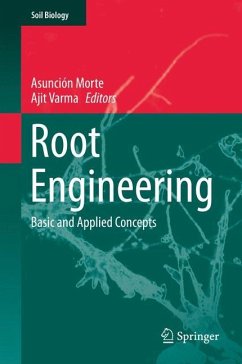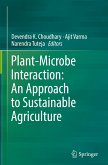This volume illustrates the complex root system, including the various essential roles of roots as well as their interaction with diverse microorganisms localized in or near the root system.
Following initial chapters describing the anatomy and architecture as well as the growth and development of root systems, subsequent chapters focus on the various types of root symbiosis with bacteria and fungi in the rhizosphere. A third section covers the physiological strategies of roots, such as nitrate assimilation, aquaporins, the role of roots in plant defense responses and in response to droughts and salinity changes. The book's final chapters discuss the prospects of applied engineering of roots, i.e., inventing new root structures or functions through genetic modification, but also with conventional breeding and manipulation of root symbionts. The budding field of root engineering is expected to promote a second green revolution.
Following initial chapters describing the anatomy and architecture as well as the growth and development of root systems, subsequent chapters focus on the various types of root symbiosis with bacteria and fungi in the rhizosphere. A third section covers the physiological strategies of roots, such as nitrate assimilation, aquaporins, the role of roots in plant defense responses and in response to droughts and salinity changes. The book's final chapters discuss the prospects of applied engineering of roots, i.e., inventing new root structures or functions through genetic modification, but also with conventional breeding and manipulation of root symbionts. The budding field of root engineering is expected to promote a second green revolution.
"We enjoyed reading this book and would recommend it to anyone with an interest in crop breeding, agronomy, and sustainable agriculture. Importantly, this book will serve as an introductory course in root biology for undergraduate and graduate students, and as a useful resource of anecdotes for teachers. ... this book will inspire established scientists to future innovations, while youngsters will find it useful as a tool to guide novel experiments." (P. C. Abhilash and Rama Kant Dubey, Trends in Plant Science, Vol. 20 (7), July, 2015)
"Morte (Univ. of Murcia, Spain) and Varma (Amity Univ., India) have compiled varied but mostly too-brief contributions representing many aspects of root biology. The 22-chapter book does cover both applied and fundamental issues, but for most readers, the result could be more coherent with the topics better integrated and related. Summing Up: Recommended. Upper-division undergraduates, graduate students, and researchers/faculty." (W. Loescher, Choice, Vol. 52 (6), February, 2015)
"Morte (Univ. of Murcia, Spain) and Varma (Amity Univ., India) have compiled varied but mostly too-brief contributions representing many aspects of root biology. The 22-chapter book does cover both applied and fundamental issues, but for most readers, the result could be more coherent with the topics better integrated and related. Summing Up: Recommended. Upper-division undergraduates, graduate students, and researchers/faculty." (W. Loescher, Choice, Vol. 52 (6), February, 2015)








